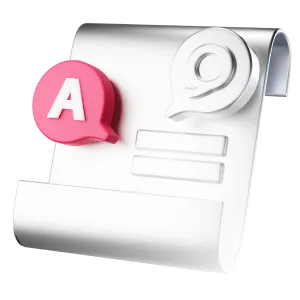Having a mechanic replace a single tie-rod end could cost as little as $150, although on some vehicles, you’ll pay close to that for the part alone.
But you’ll usually need to replace tie-rod ends in pairs, and it’s highly recommended that you have a professional alignment done afterward, so the total cost of a tie-rod end replacement will likely range somewhere between $500 and $1,000.
What does a tie-rod end do?
Tie rods in your vehicle connect the steering, suspension and wheels, and are responsible for helping the vehicle turn when you move the steering wheel. The outer tie-rod ends connect the rod to the steering knuckle, and the inner tie-rod ends connect the rod to the steering rack.
What are the signs that a tie-rod end should be replaced?
If you notice any of the following, your tie-rod ends may be worn or failing:
- Vibrations: As the tie-rod ends start to fail, they allow a lot of play in the tie rod, which creates a loose connection between the steering system, wheels and suspension. When this happens, you may feel vibrations in the steering wheel, the front of the car or even the entire car.
- Play in the steering wheel: If your tie-rod ends are worn, you’ll notice that you’re not able to steer with precision, and your wheels may not move as well as they should when you turn the steering wheel. Your steering wheel may also be difficult to turn, or you may hear noise when you turn it.
- Bad alignment: If your tie rod is wearing out, it can’t help hold your car in alignment, so you may notice that your vehicle drifts to one side or the other even if you’re holding the steering wheel straight.
- Strange noises from the front end: You may notice your tires or front end rattling, squeaking, knocking or clunking as you drive. The sound might get louder when you’re turning or at higher speeds.
- Uneven wear on tires: If you notice that your tires are wearing faster on the inside or outside edges, it could be a sign that your tie-rod ends are failing.
What affects the cost of a tie-rod end replacement?
The main factor affecting the cost of your tie-rod end replacement is parts. Inexpensive aftermarket tie-rod ends can cost as little as $20, but original manufacturer parts for a high-end vehicle can cost over $100. You might also pay more if the parts for your vehicle are hard to source.
At an experienced shop, this job will probably take around two hours of labor for most vehicles.
Consider replacing both tie-rod ends at the same time
Most tie rods have two main parts: an inner tie rod and an outer tie rod. Each of these has a left side and a right side. It’s generally recommended that you replace both ends at the same time. Your mechanic may recommend that you replace both the inner and outer tie rods at the same time, too.
Because the inner tie rods are a little more difficult to replace, they’ll cost a little more than the outer tie rods.
It’s recommended that you get an alignment
Because your tie rods help hold your vehicle in alignment, it’s a good idea to have a wheel alignment done after you replace the tie-rod ends. This will help prolong the life of your tires and improve your vehicle’s handling.
An alignment will add $150-$200 to your total repair cost.
What happens if I don’t replace my tie-rod ends?
Having issues with your tie rods can lead to more significant and expensive car trouble if you don’t fix it. And if your tie-rod ends go out while you’re driving, it could cause you to lose control of your vehicle, leading to an accident. If you suspect there’s an issue with your tie-rod ends, you should have the problem taken care of right away.
Additionally, if you have to get an annual inspection for your vehicle, the inspector may check your tie rods, and you may fail if your tie-rod ends show signs of wear.
Can I replace a tie-rod end at home?
If you’re fairly comfortable jacking up and working on a vehicle, replacing your tie-rod ends may not be a difficult job. But you need to pay close attention to the position of the old tie-rod ends. The ends can be difficult to remove if they’re rusted or corroded, and you’ll still need to take in your vehicle to have an alignment done, so it’s usually faster and easier to leave this job to a professional mechanic.

Expert insurance writer and editor Amy Bobinger specializes in car repair, car maintenance, and car insurance. Amy is passionate about creating content that helps consumers navigate challenges related to car ownership and achieve financial success in areas relating to cars. Amy has over 10 years of writing and editing experience. After several years as a freelance writer, Amy spent four years as an editing fellow at WikiHow, where she co-authored over 600 articles on topics including car maintenance and home ownership. Since joining Jerry’s editorial team in 2022, Amy has edited over 2,500 articles on car insurance, state driving laws, and car repair and maintenance.

Phil Metzger is a personal finance editor and writer with more than 30 years of experience editing and writing content across a variety of industries. In writing and editing for Jerry, Phil’s mission is to help car owners better understand their vehicles and the costs associated with car ownership. Before joining Jerry, Phil worked as a writer and editor for newspapers, magazines, television radio and online news. His work has appeared in many major publications and websites over the years, including a series he edited that was a finalist for a Pulitzer Prize.







